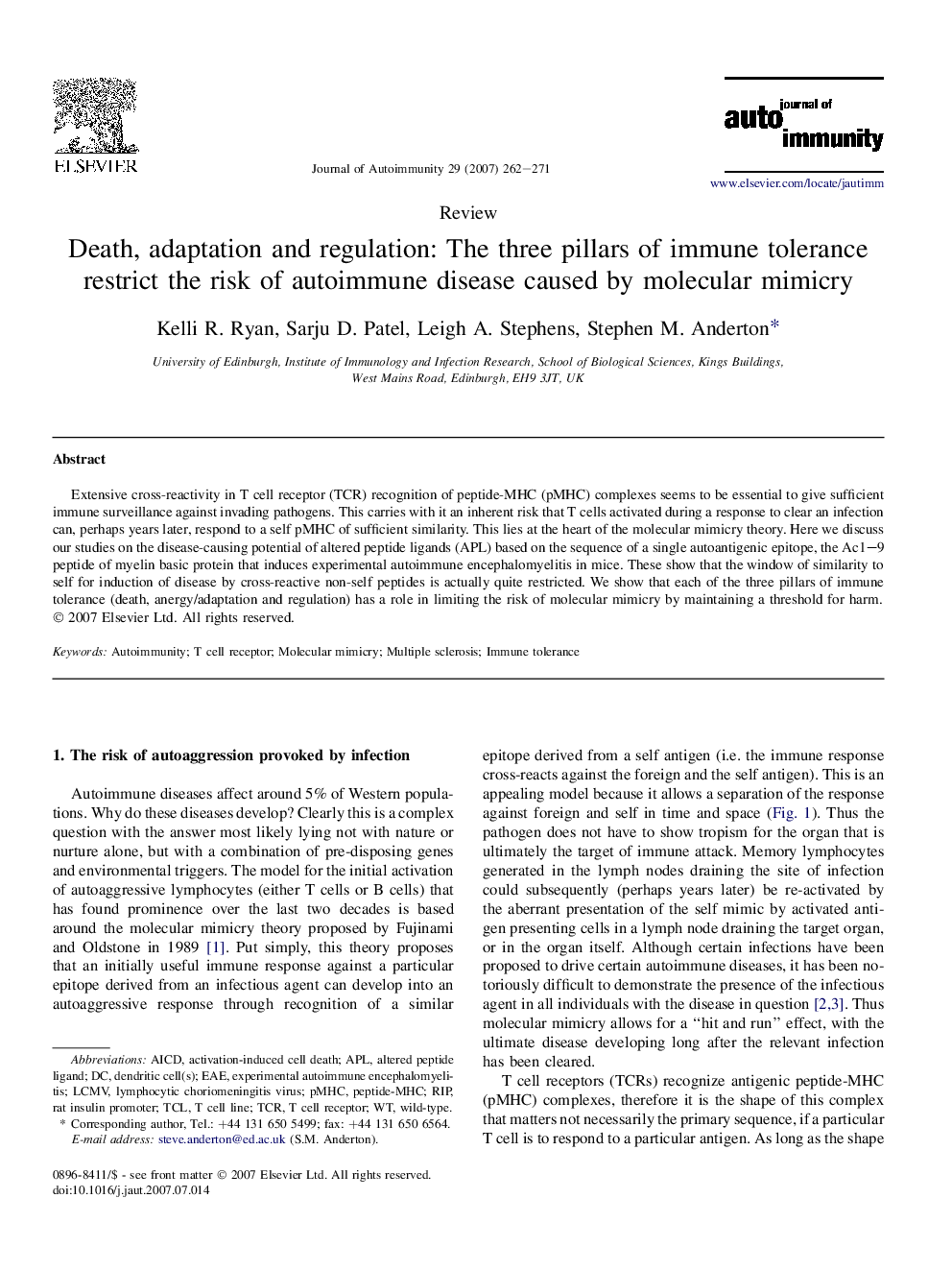| Article ID | Journal | Published Year | Pages | File Type |
|---|---|---|---|---|
| 3368430 | Journal of Autoimmunity | 2007 | 10 Pages |
Extensive cross-reactivity in T cell receptor (TCR) recognition of peptide-MHC (pMHC) complexes seems to be essential to give sufficient immune surveillance against invading pathogens. This carries with it an inherent risk that T cells activated during a response to clear an infection can, perhaps years later, respond to a self pMHC of sufficient similarity. This lies at the heart of the molecular mimicry theory. Here we discuss our studies on the disease-causing potential of altered peptide ligands (APL) based on the sequence of a single autoantigenic epitope, the Ac1–9 peptide of myelin basic protein that induces experimental autoimmune encephalomyelitis in mice. These show that the window of similarity to self for induction of disease by cross-reactive non-self peptides is actually quite restricted. We show that each of the three pillars of immune tolerance (death, anergy/adaptation and regulation) has a role in limiting the risk of molecular mimicry by maintaining a threshold for harm.
